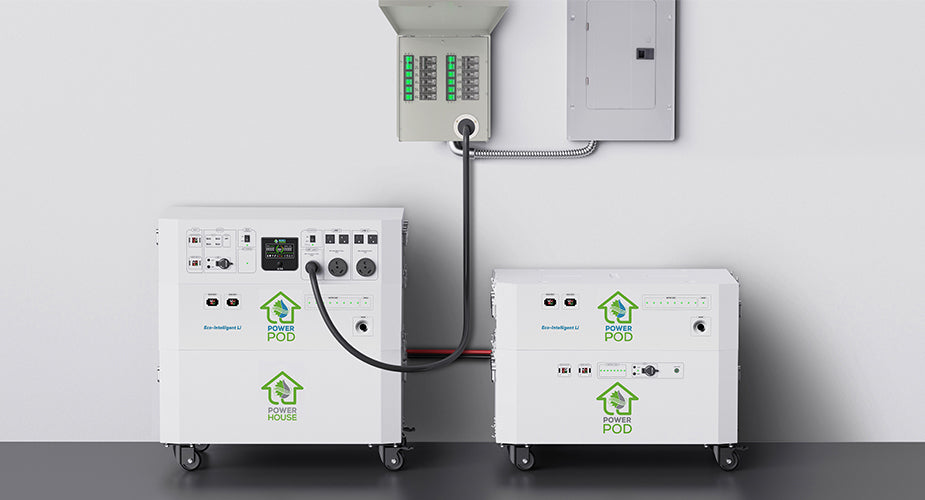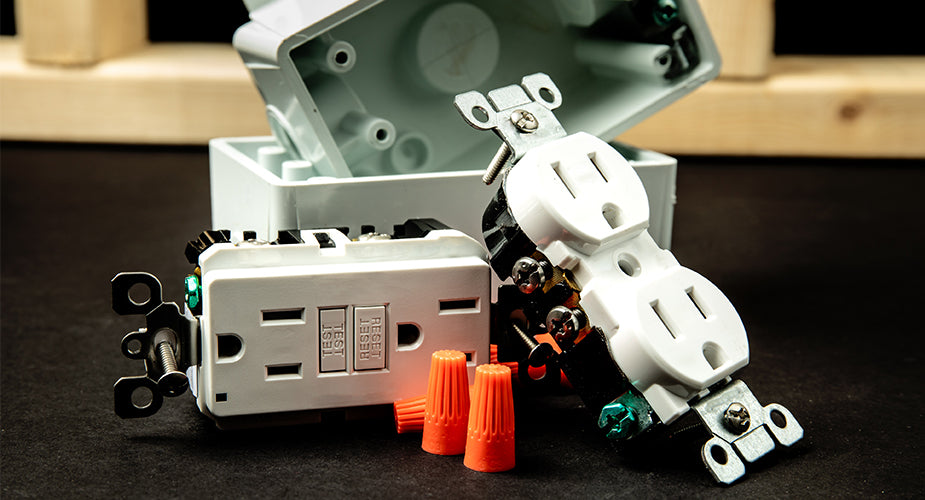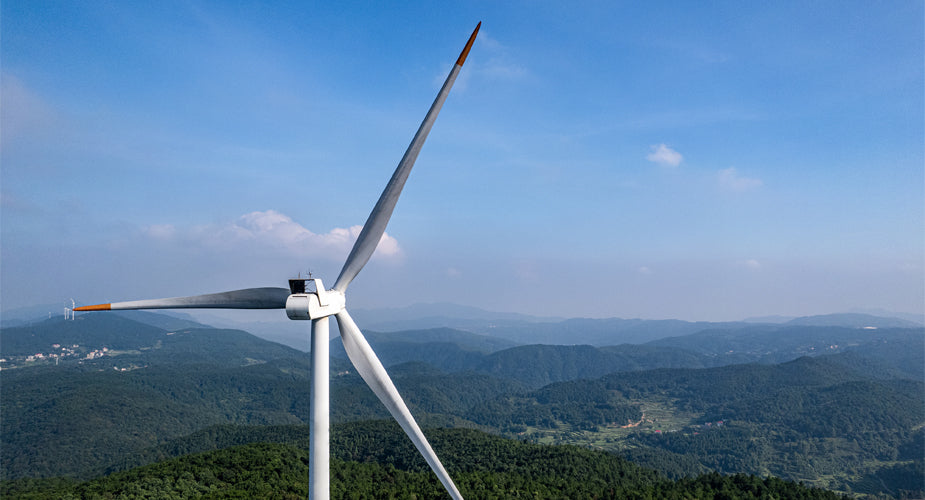In a world where uninterrupted power supply is crucial, generators have become indispensable—even in residential settings. Over the years, more and more homeowners have been looking for a reliable source of backup power through solar generators. Transfer switches play an important role in solar power systems to enhance their functionality and ensure a smooth transition between power sources. In this article, we’ll take a look into the intricacies of transfer switches for generators. We will discover their significance and how they can be seamlessly connected to solar generators.
What is a transfer switch for generators?
For a quick explanation, a generator transfer switch is a critical component of generator systems responsible for safely and efficiently transferring power between different sources. You can think of the transfer switch as a bridge between the primary power source, commonly the local grid, and a secondary power source, such as a backup generator or solar panels. The main function of a transfer switch, however, is to prevent backfeeding. This refers to a situation where electricity from the solar panels or generator flows back into the grid, which poses a safety risk to utility workers and also potential damage to the generator.
Types of Transfer Switches
There are two main types of generator transfer switches: manual and automatic.

1. Manual Transfer Switch
From its name, a manual transfer switch requires manual intervention to allow the switch between two power sources. Usually mounted next to the main electrical panel, users need to physically turn a switch to transition power from the local grid to generator power during an electric interruption.
Compared to its counterpart, a manual transfer switch is more affordable as it requires a user to be present and actively engage in the switching process, which may only be ideal for residential and small business settings.

2. Automatic Transfer Switch (ATS)
Automatic transfer switches, on the other hand, allow a seamless transition between power sources without requiring manual intervention. These devices can detect power interruptions and automatically shift the load from the local grid to the generator.
The ATS is suitable for scenarios where immediate and uninterrupted power transfer is essential. Some applications where an automatic transfer switch is crucial are in hospitals, emergency centers, and data centers.
Do you need a transfer switch for a standby generator?
Can you hook up to a generator without a transfer switch? Technically, yes, a standby generator can be connected to your home without using a transfer switch. You can do this by running extension cords from the generator directly to the appliance that needs electricity. HOWEVER, this is less efficient. Other than convenience, installing a transfer switch for your generator is, in fact, in compliance with the electrical code in many jurisdictions.
Safety is the primary benefit of a transfer switch. With this device, you isolate the generator from the grid, preventing backfeeding and possible electrocution hazards. You also ensure the safety of your household and utility workers. In addition to this, transfer switches protect appliances and electronics from the damage that is caused by voltage fluctuations or backfeeding. By controlling the flow of electricity, transfer switches ensure that only designated circuits receive power from the generator, thus, preventing overload and safeguarding sensitive equipment.

Do you need a transfer switch with a portable generator?
A transfer switch isn’t always mandatory for portable generators, as this depends on your specific setup and scenario. Small portable generators wouldn’t need a transfer switch, but it’s a good idea to have one, especially if the generator is above 5,000W. Without a transfer switch, you are limited to the number of devices you can power through your generator.
What is the ideal type of transfer switch for whole-house generators?
There are several factors that you can consider when you’re choosing between an ATS or an MTS. For example, the generator size, the electrical load requirements of your home and personal preferences are some factors that come into play. However, if a seamless transfer of power isn’t critical and a couple of minutes of power outage isn’t much of an inconvenience, then the more economical and less maintenance option is the manual transfer switch.
Top Recommendations: Transfer Switch and Solar Generator
If you’re in the market for reliable backup power solutions for your home, look no further, as we have a wide range of solar generators to power your home. Nature’s Generator Powerhouse has a maximum power output of 120V/240V 7200W, which can power almost anything in your home. If that’s not enough power for your needs, our solar generators are designed as an expandable home power eco-system so you can make fit for what you need. You can opt to add Powerpods, solar panels, wind turbines, and yes, we also have transfer switches.
Our manual transfer switches come in 4, 6, and 12-circuit configurations, giving you the flexibility and convenience in managing your home backup power systems. Nature’s Generator transfer switches are built to deliver sturdy performance for seamless power transition. They also come in clearly labeled circuits for easy identification. Installation is simple, with detailed instructions, and with mounting hardware included. Our transfer switches are compatible with Nature’s Generator Powerhouse and other generator brands.
With Nature's Generator Manual Transfer Switches, homeowners can safely and efficiently switch between grid power and generator power during outages, ensuring uninterrupted electricity supply to essential circuits or appliances.
Can I install a transfer switch for a generator myself?
Since the installation of a transfer switch involves working with electrical wiring, we highly advise the you approach this with caution. Some homeowners with electrical experience may feel confident in installing a transfer switch for their generator; however, it’s important to remember that any type of electrical work is hazardous if it’s not done correctly.
Also, in most cases, you would need to secure a permit when installing a transfer switch, whether it’s automatic or manual. We recommend working with a licensed electrician to ensure that your transfer switch is installed safely and correctly and in compliance with all applicable codes and regulations. This also helps in ensuring the reliable operation of your generator system.
If you have questions about solar generators or transfer switches, you can reach out to our customer service team, and we’ll be more than happy to answer your inquiries.
* We want to give credit where credit is due. Professional writer, Ishna Sablaya, contributed research and content to this blog titled: What is a Transfer Switch for Generator? Thank you, Ishna, for your contributions!





